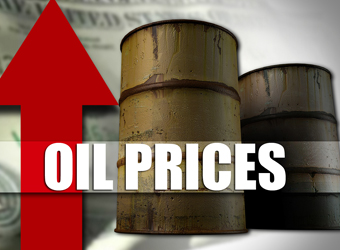Oil prices edged higher on Wednesday, adding to steep gains in the previous session, as markets eyed an escalation of Middle East tensions after Europe’s air traffic control agency warned of possible air strikes on Syria in the next 72 hours.
Brent crude futures rose to $71.09 per barrel at 0104 GMT, up 7 cents from their last close. Brent surged more than 3 percent on Tuesday to hit its highest level since late 2014, at $71.34 a barrel.
U.S. WTI crude futures were at $65.63 a barrel, up 12 from their last settlement.
The United States and its allies are considering a strike against Syrian President Bashar al-Assad’s forces following a suspected poison gas attack last weekend.
Pan-European air traffic control agency Eurocontrol said air-to-ground and/or cruise missiles could be used within the next 72 hours, warning that there was a possibility of intermittent disruption of radio navigation equipment.
Although Syria itself is not a significant oil producer itself, the wider Middle East is the world’s most important crude exporter and tension in the region tends to put oil markets on edge.
Oil markets were also supported by easing concerns over a prolonged trade spat between the United States and China after China’s President Xi Jinping on Tuesday gave a speech with a conciliatory tone.
“The relaxation of tensions between the U.S. and China (is) allowing oil traders to exercise their worries over geopolitics,” said Greg McKenna, chief market strategist at futures brokerage AxiTrader.
Not all oil market indicators pointed to ongoing price rises, however.U.S. crude inventories rose by 1.8 million barrels in the week to April 6 to 429.1 million, according to a report by the American Petroleum Institute on Tuesday, compared with analysts’ expectations for a decrease of 189,000 barrels.
And the U.S. Energy Information Administration said on Tuesday that it expects domestic crude oil production in 2019 to rise by more than previously expected, driven largely by growing U.S. shale output.
In its monthly short-term energy outlook, the agency forecast that U.S. crude oil output will rise by 750,000 barrels per day to 11.44 million bpd next year. Last month, it expected a 570,000 bpd year-over-year increase to 11.27 million bpd.
That will likely make the United states the world’s biggest oil producer by 2019, surpassing Russia which currently pumps out almost 11 million bpd. Source: Reuters
Source: Reuters


